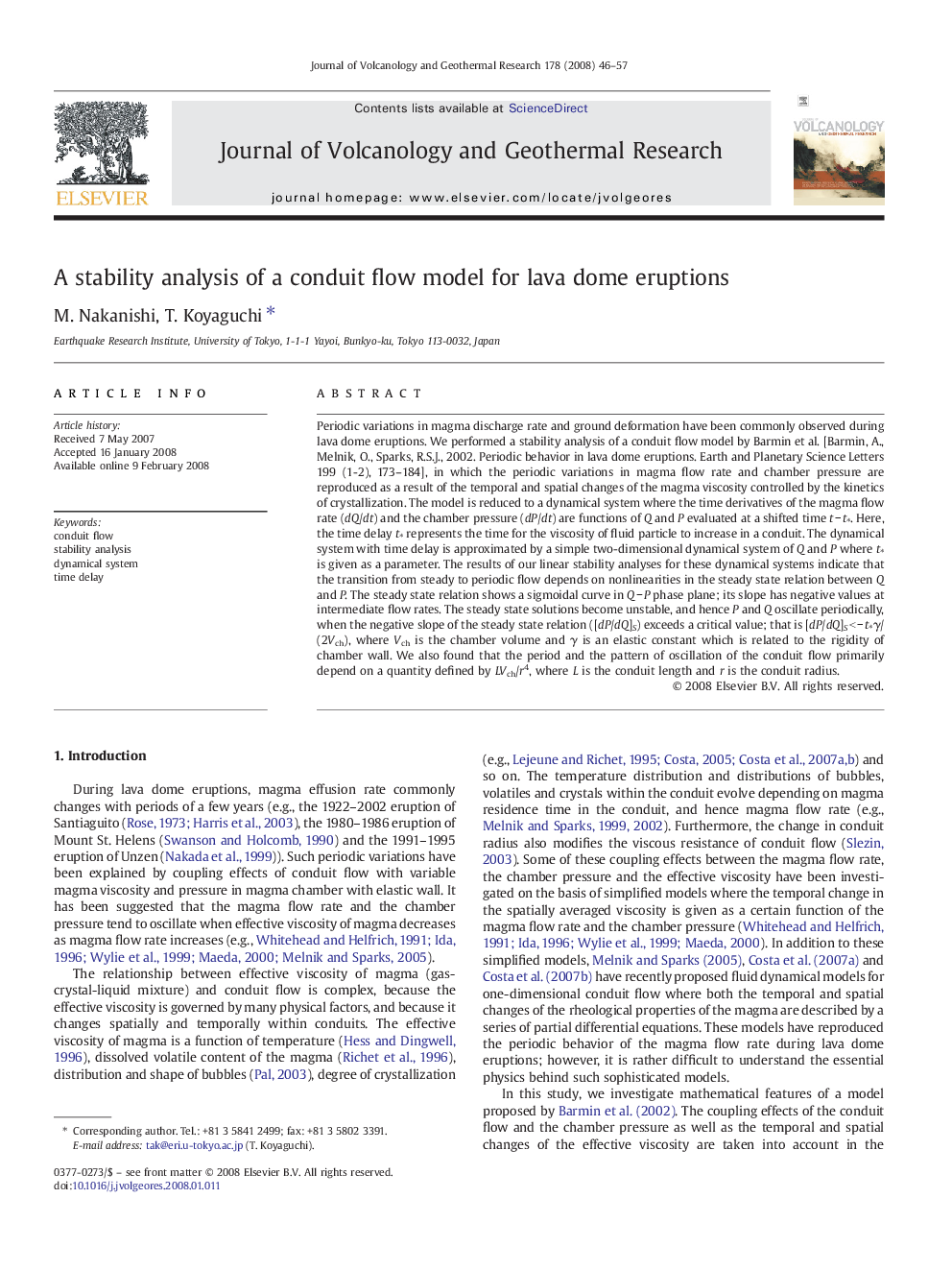| کد مقاله | کد نشریه | سال انتشار | مقاله انگلیسی | نسخه تمام متن |
|---|---|---|---|---|
| 4713497 | 1353895 | 2008 | 12 صفحه PDF | دانلود رایگان |

Periodic variations in magma discharge rate and ground deformation have been commonly observed during lava dome eruptions. We performed a stability analysis of a conduit flow model by Barmin et al. [Barmin, A., Melnik, O., Sparks, R.S.J., 2002. Periodic behavior in lava dome eruptions. Earth and Planetary Science Letters 199 (1-2), 173–184], in which the periodic variations in magma flow rate and chamber pressure are reproduced as a result of the temporal and spatial changes of the magma viscosity controlled by the kinetics of crystallization. The model is reduced to a dynamical system where the time derivatives of the magma flow rate (dQ/dt) and the chamber pressure (dP/dt) are functions of Q and P evaluated at a shifted time t − t⁎. Here, the time delay t⁎ represents the time for the viscosity of fluid particle to increase in a conduit. The dynamical system with time delay is approximated by a simple two-dimensional dynamical system of Q and P where t⁎ is given as a parameter. The results of our linear stability analyses for these dynamical systems indicate that the transition from steady to periodic flow depends on nonlinearities in the steady state relation between Q and P. The steady state relation shows a sigmoidal curve in Q − P phase plane; its slope has negative values at intermediate flow rates. The steady state solutions become unstable, and hence P and Q oscillate periodically, when the negative slope of the steady state relation ([dP/dQ]S) exceeds a critical value; that is [dP/dQ]S < − t⁎γ/(2Vch), where Vch is the chamber volume and γ is an elastic constant which is related to the rigidity of chamber wall. We also found that the period and the pattern of oscillation of the conduit flow primarily depend on a quantity defined by LVch/r4, where L is the conduit length and r is the conduit radius.
Journal: Journal of Volcanology and Geothermal Research - Volume 178, Issue 1, 30 November 2008, Pages 46–57